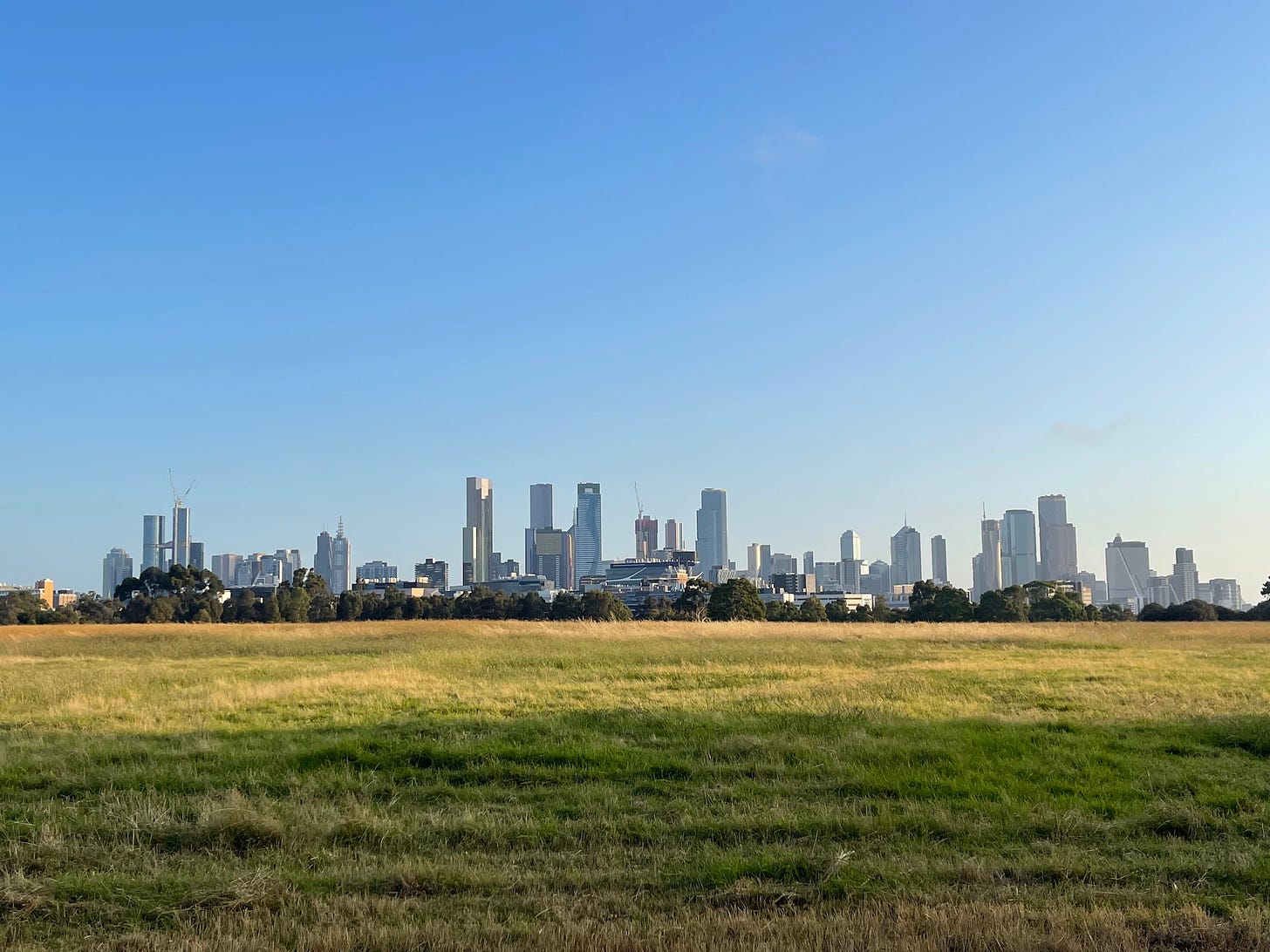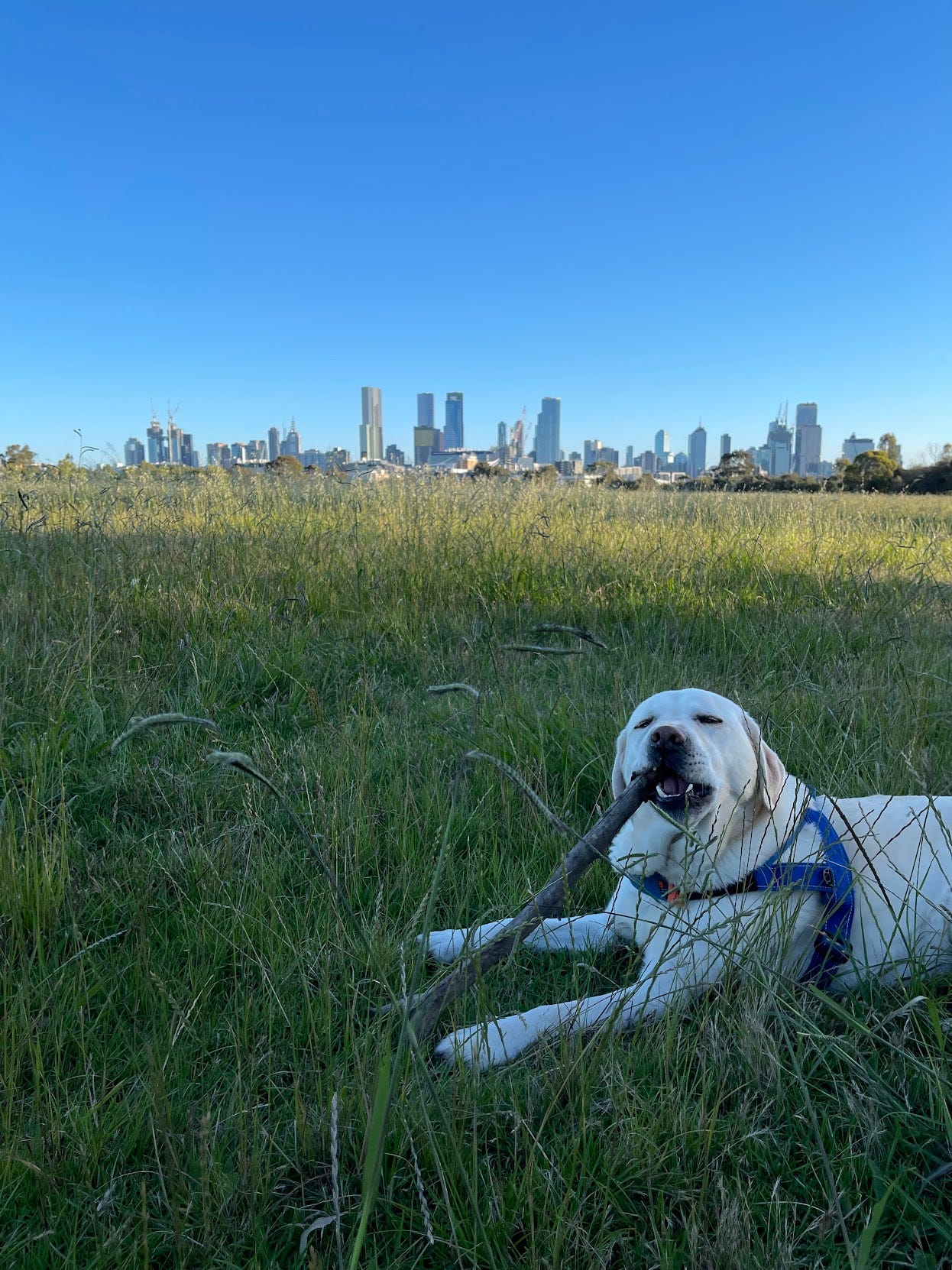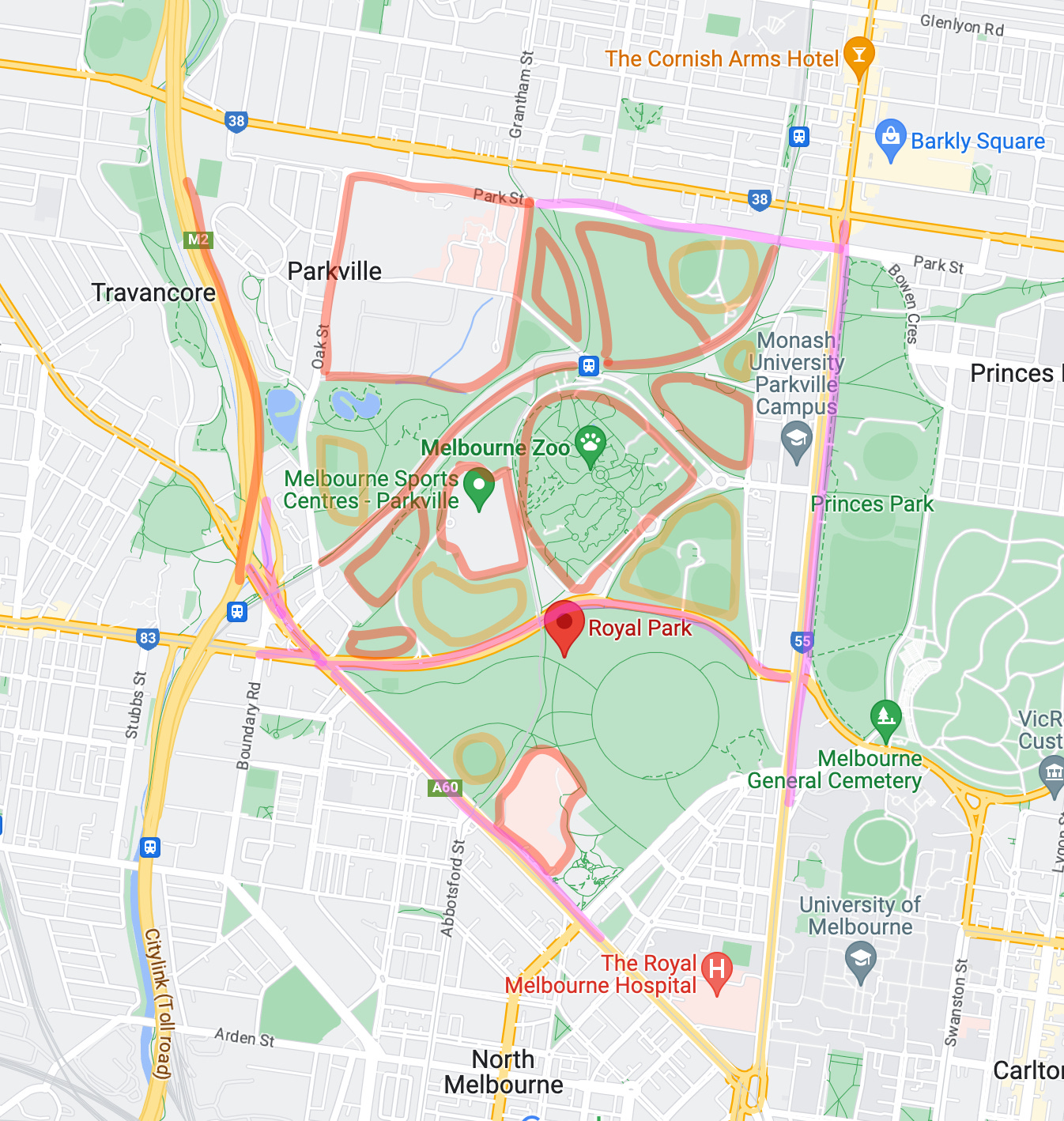Melbourne's missing Central Park?
Royal Park has so much potential but so many design flaws. Fixing them could make it magical.
Royal Park is one of my favourite places. I spend a lot of my life there, usually walking my dog.
The area around the grassland circle in the south of the park is downright magical. Surrounded by nature but with a city skyline backdrop.
But what about the rest of it?
When you explore the rest of the park, you notice one big problem. A lot of the park, and the park surroundings, is dead space. Obviously we want parks to be peaceful spaces, but much of it feels downright deserted. And when you take a look at the map, there’s a very good reason reason for this.
From the perspective of the everyday, casual user of the park, who just wants to walk through, hang out, or have a picnic, most of this public park is anything but public.
In fact, it’s downright hostile.
Here, I’ve mapped out the areas where an everyday user (who isn’t there for a specific activity like visiting the zoo or playing organized sport) can’t go.
Red denotes areas you can’t walk at any time. This includes the zoo, the golf course, the hockey/netball stadium, the tennis club. It also includes uncrossable boundaries, such as the railway line (which is entirely uncrossable except at the station!) and the large buildings on the corners (CSL campus/youth prison to the northwest, Children’s Hospital in the south).
The nearby Citylink is also another uncrossable boundary, preventing a large population to the west from accessing the park.
Then in pink are the busy roads. One runs right through the middle, which is so busy as to be practically uncrossable except at the single traffic lights in the middle, and other surrounding roads with considerable traffic.
In yellow we have sports fields. These are accessible when sport isn’t on, but not otherwise.
Unusable, unwalkable, unfriendly
All of this adds up to a space that isn’t very inviting. The north half of the park, in particular, is an unfriendly maze unsuitable for spending time in. Even travelling through is a hostile experience. One wrong turn means backtracking a up a railway line or walking around an entire zoo to get to where you want to go.
For people who live nearby, the park is even blocked off from convenient use in most directions. Crossing from North Melbourne means crossing the horribly congested Flemington Rd. Crossing from Flemington or Travancore via Flemington Bridge means navigating an overpass maze.
Royal Park is nice and walkable from the thin slice of Parkville to the east, but this has a low population, and another park on the eastern size, reducing the catchment population even further.
Live near the park in Brunswick to the North? Walking your dog requires crossing two busy roads, threading your way through a golf course, and either trekking to the other end of the park, or finding a sports field that isn’t occupied.
The preponderance of sports fields offer little rain or sun shelter (you can’t exactly plant a tree in the middle of a footy oval), and little public amenity. Need to use a loo? Tough luck: When sport isn’t on, the sports club lock up their toilets.
Transport: So near, yet so far
Royal Park is uniquely well serviced by public transport lines (Royal Park golf course is apparently the only course in the world with both a train and tram line running through it) but the train drops you off in a spot that’s really only useful for the visiting the zoo or working at CSL labs.
(And in spite of this, most zoo visitors seem to visit by car - the zoo is surrounded on all sides by mall-scale car parking.)
For casual visitors who might want to spend a day in the park, the fare structure is a further deterrent. Melbourne’s fixed price fares mean a one-stop trip on the train from Jewell station in the south of Brunswick to Royal Park is over $4.
Why not more like Central Park?
Royal Park is a precious piece of green space right next to Melbourne’s CBD. Why not allow more people to enjoy it? It’s big enough that even with triple the utilization, it would still feel very quiet and peaceful.
Here’s what I’d do:
Surround it with higher density housing. Think Upper East/West Side vibes on all sides.
Add housing in spaces within the park. This shouldn’t reduce green space, as there’s plenty of space in the park that isn’t already green, such as the zoo and sports stadium car parking (underground em, build lots of housing over the top).
Pedestrianize the surrounding roads. Make it easy to get to via foot and bike. Rework the paths to avoid hard borders and dead zones.
Shut down the golf course, and turn it into a beautiful public space.
Turn the sports stadium into a public pool. Unlike a hockey field or netball arena, this would get used around the clock and attract families to the park.
Reduce/rework the land dedicated to organized sports fields, to spread them out a bit more, and add more public amenity.
Shut down the youth prison (children shouldn’t be in prison anyway), and rework the CSL campus to be a university-style public campus that the public can walk through.
Elevate the rail right through the park, from Jewell Station through to Flemington Bridge (Flemington Bridge is already elevated, and Jewell is already scheduled to be raised as part of the Brunswick LXRP). Just connect the two.
Close Elliot Avenue (the road through the middle) entirely, to combine the two halves of the park. Build housing in the newly created space!
Royal Park needs a vision
Melbourne’s sprawl problems are well known, and it’s been heartening to see the need for more urban density get more airtime. But “more density” is a very abstract thing. And density without green spaces and safe streets isn’t great.
Perhaps what we need are specific visions of specific spaces that can do density while offering increased access to beautiful spaces. New York wouldn’t be New York without Central Park. Why can’t Royal Park play a similarly Central role in Melbourne’s future?






